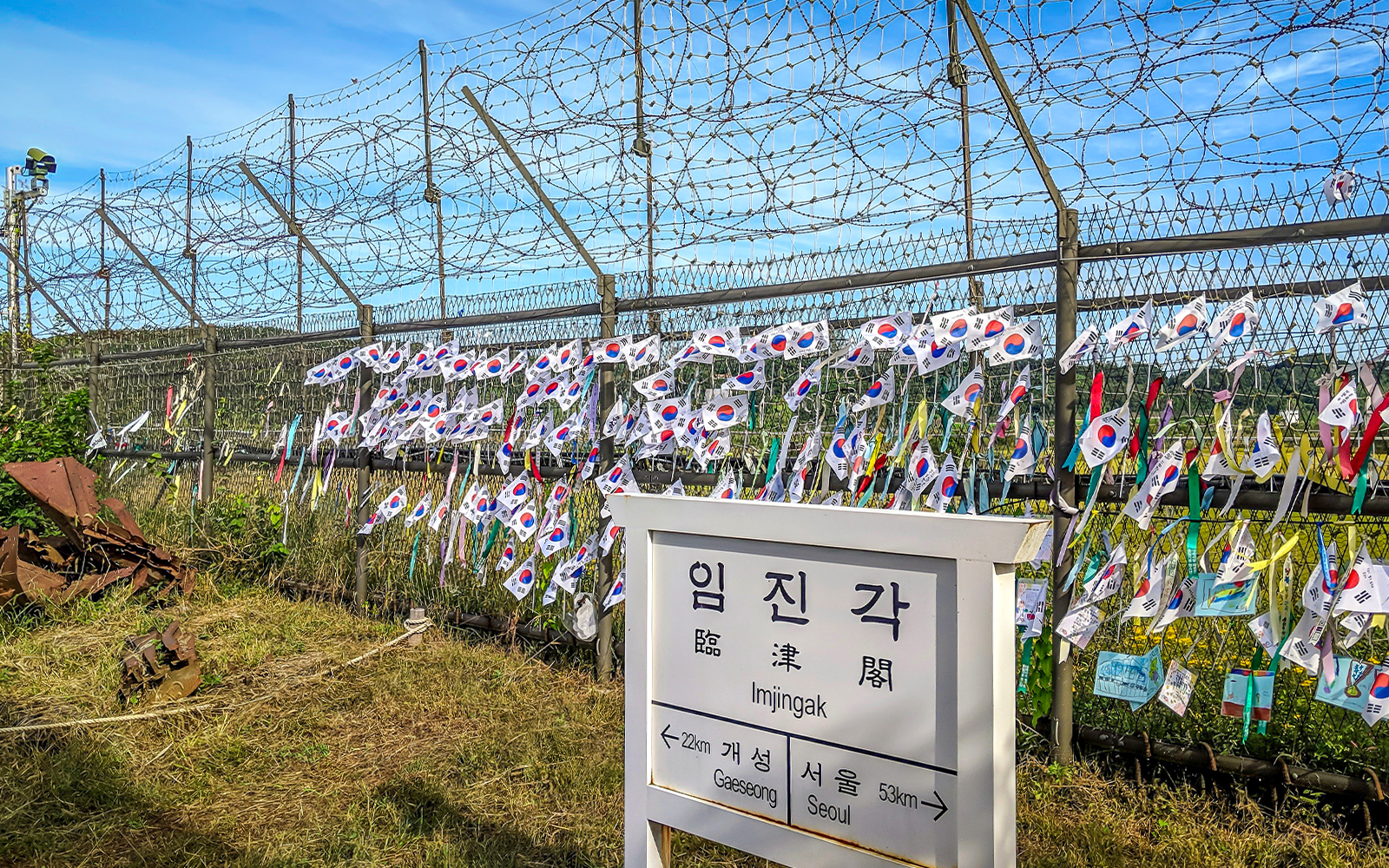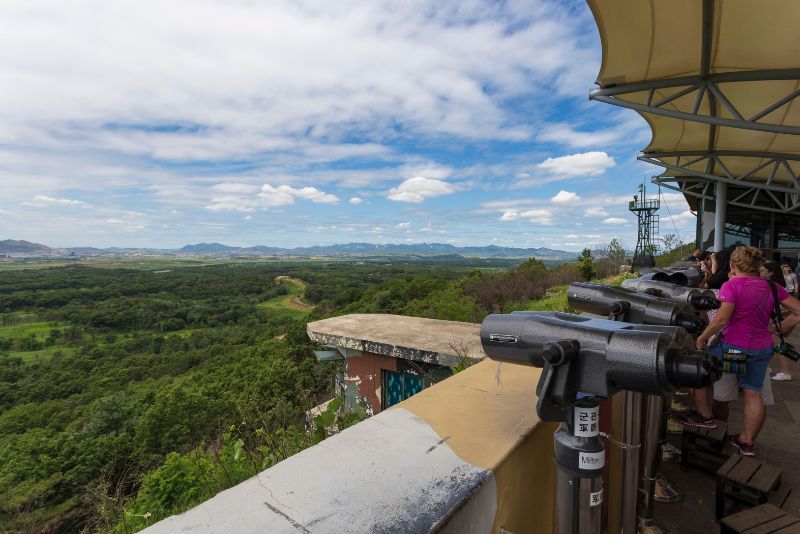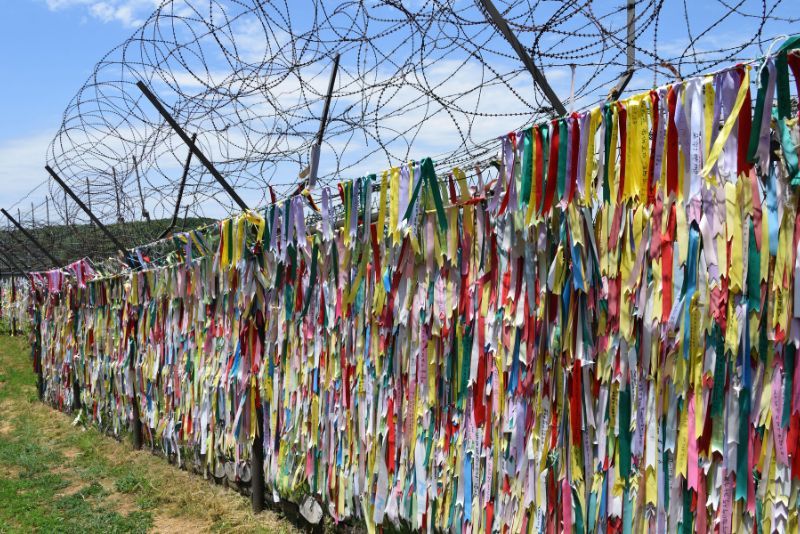Demilitarized Zone: Day Trips and Tours from Seoul
South Korea is home to a colorful history, which spans less than 80 years since its independence was declared. Those who are interested in the events that unfurled between the two sides of Korea should consider heading to the Demilitarized Zone where they can discover secret tunnels designed for shock attacks, war monuments remembering national heroes and bridges that represent freedom.
Demilitarized Zone day trips from Seoul allow visitors to gain an insight into the horrors of the war that divided the nation and discover what life is like on the other side of the border.
South Korea is home to a colorful history, which spans less than 80 years since its independence was declared. Those who are interested in the events that unfurled between the two sides of Korea should consider heading to the Demilitarized Zone where they can discover secret tunnels designed for shock attacks, war monuments remembering national heroes and bridges that represent freedom.
Demilitarized Zone day trips from Seoul allow visitors to gain an insight into the horrors of the war that divided the nation and discover what life is like on the other side of the border.

(0/24) checking Musement...
South Korea is home to a colorful history, which spans less than 80 years since its independence was declared. Those who are interested in the events that unfurled between the two sides of Korea should consider heading to the Demilitarized Zone where they can discover secret tunnels designed for shock attacks, war monuments remembering national heroes and bridges that represent freedom.
Demilitarized Zone day trips from Seoul allow visitors to gain an insight into the horrors of the war that divided the nation and discover what life is like on the other side of the border.

Here's all you need to know about the Demilitarized Zone, one of the most exciting day trips from Seoul.
How to get to the Demilitarized Zone from Seoul?
The Demilitarized Zone covers 240 kilometers of land in the northernmost part of South Korea and serves as a buffer between the tense nations of North, and South Korea.
Guided tour to the Demilitarized Zone from Seoul
A guided excursion to the Demilitarized Zone is the only way to gain access to the area. Because of this, there are a variety of organized day trips to choose between, offering visitors a chance to explore the nation’s troubled past. These tours vary in duration, from 7 to 13 hours, and typically begin early in the morning, before 7:30 AM.
In most cases, you’ll meet at a central location in the center of Seoul, such as a renowned hotel or subway station, and journey to the DMZ together. Seoul is home to a convenient and reliable public transportation network made up of buses, trains, and a subway system, and is often ranked among the best in the world, making it easy for you to navigate its districts and reach your meeting point.
Alternatively, in some cases, such as on private tours, you’ll enjoy a complimentary accommodation pickup. After your jaunt to the Demilitarized Zone, you’ll be returned to your meeting point.
What is the typical itinerary?
While each Demilitarized Zone day tour is unique, all excursions share similarities. After meeting your guide, either at a landmark in the city or in your hotel lobby, you’ll climb aboard your vehicle, acquaint yourself with your group, and travel north in the direction of the border.
You’ll stop along the way to see the many monuments that are scattered across Imjingak Park, as well as the Freedom Bridge, which marks the joy-filled repatriation of thousands of soldiers returning from North Korea. In most cases, you’ll then continue on to the Third Tunnel of Aggression and learn about the planned invasion of Seoul by northern troops.
From here, you may head to Mount Dora, as well as the Unification Village, or, alternatively, travel to one of South Korea’s suspension bridges, built to honor various battalions for their war efforts.
There is typically a lunch stop on Demilitarized day trips, which may be included in your tour price or paid for separately and, once your adventure is over, you’ll be returned to your starting point in Seoul.
Some day trips head to other areas along the zone, including Cherorwon where you’ll find a host more landmarks associated with the war, including the Second Tunnel of Aggression.
What types of Demilitarized Zone tours are there?
Guided tours to the Demilitarized Zone from Seoul

On this Demilitarized Zone day tour, you’ll travel first to Imjingak Park, littered with monuments remembering the Korean War and paying homage to those who never returned home.
Here, you’ll also find the Freedom Bridge, built to bring home thousands of prisoners of war, trapped in North Korea. From there, you’ll make your way to the Third Tunnel of Aggression, which is over 400 meters long and was built by the North Korean military to launch a surprise attack on Seoul, before being discovered, incomplete, in 1978.
In your comfortable vehicle, you’ll journey up the slopes of Mount Dora to the Dora Observatory, from which you can gain panoramic views that stretch as far as North Korea. Another highlight of this Demilitarized Zone excursion is the Unification Village where officials from both sides of Korea meet for diplomatic conferences.
You can choose a half-day option, which transports you back to your hotel from here. Alternatively, book the full-day tour, which also includes the 14th-century Gyeongbokgung Palace, built by the Joseon dynasty, and the vibrant Insa-Dong district back in Seoul.
Day trip to the DMZ plus Ganghwa Island from Seoul
This combination day trip leads you to the Buddhist mountainside Bomunsa Temple, which is located on Seongmodo Island and dedicated to Guanyin Bodhisattva. This temple is home to 500 baby Buddha statues, as well as a large golden monument honoring Yaksayeorae-bul. Moving on, you’ll visit Incheon’s Daeryong Market, which is guarded by the Korean Marine Corps, to protect the destination against North Korean forces.
Then, make your way to the Ganghwa Peace Observatory, part of which is only accessible to military personnel. Moving between each floor of this building, you can gain an education on the Korean War and admire views over North Korea’s mountainous landscape. Hwagae Park is another must-visit spot on a combination day trip to Ganghwa Island and the Demilitarized Zone, which features a tranquil pavilion, and hosts an annual cherry blossom festival.
Before returning to Seoul, you’ll stop for refreshments amid dazzling artworks at the Joyangbangjik Cafe.
Private tour to the Demilitarized Zone from Seoul

If you’re seeking greater personalization than a group excursion can provide, consider participating in a private day trip to the Korean Demilitarized Zone. This tour also visits Imjingak Park where you can pay your respects to the fallen soldiers of the Korean War and discover a real M109 Howitzer. Alongside the Freedom Bridge, you’ll see the granite Mangbaedan Altar on this tour, which ex-North Koreans visit to perform ancestral rites and remember the family members they are separated from.
You’ll then discover the Third Tunnel of Aggression, as well as the Dora Observatory, both of which you’ll discuss in great detail with your guide, asking any burning questions that may spring to mind. From here, you can choose between seeing the Gamaksan Chulleong Bridge, dedicated to the 1st Battalion Gloucester Regiment of the British Army that supported South Korea’s efforts in the Korean War but was sadly defeated by Chinese troops.
Alternatively, take a trip to Majang Lake, which is also home to a suspension bridge, commemorating the individuals lost in the 1951 battle to build a defense line against North Korean troops.
Day tour to the Demilitarized Zone plus North Korean defector meetup from Seoul
While this Demilitarized Zone excursion visits the same landmarks as on other war tours in South Korea, its standout feature is that you’ll have the opportunity to meet a North Korean defector.
You’ll learn their brave story and have the chance to quiz them on life in the secretive North Korea. Discover the process of fleeing the nation and what happens to those who don’t make it across the border in this fascinating, and eye-opening meetup.
Day trip to Cheorwon from Seoul

Under North Korean control since 1945, the abandoned city of Cheorwon is among the destinations that have been most affected by the nations’ conflict. On this day trip to Cheorwon, you’ll first visit the Battle of Baengmagoj Monument, which remembers one of the bloodiest confrontations in the Korean War.
Before reaching your main destination, you’ll stop at the Goseokjeong National Tourist Area, located along the scenic Hantangang River, for a local lunch and to soak in the sweeping views of Korea’s natural landscape.
Then, upon arrival in Cheorwon, you’ll visit the Second Tunnel Of Aggression, which could accommodate 30,000 soldiers per hour and was discovered incomplete in 1978 after an underground explosion was detected in the area. You’ll see Woljeong-ri Railway Station, as well as the historic Korean Workers' Party Headquarters, which once formed part of North Korea.
The final spot on this captivating tour is the Cheorwon Peace Observatory, from which you can see the North Korean village of Kijŏng-dong, which is widely referred to as “Propaganda Village.”
How much does a day trip to the Demilitarized Zone from Seoul cost?
A DMZ day trip from Seoul that includes a meetup with a North Korean defector costs less than US$50 per person, with groups capped at 90 travelers. This excursion includes pickup from a central meeting point, but If you’d prefer to be collected from your hotel, you’ll pay an additional US$10 per person.
Half-day day trips to the Demilitarized Zone cost US$50 to US$60 per person, while the more comprehensive full-day option costs US$160 each. The price includes round-trip transportation from Central Seoul, as well as the services of a professional guide and, if you select a full-day experience, you’ll also be provided with lunch.
Day trips that include Ganghwa Island cost US$60 to US$70 per person. While round-trip transportation is included, the cost of the optional monorail in Hwagae Park is at your own expense.
For a day trip to Cheorwon you can expect to pay US$80 to US$90 per person, which includes roundtrip transportation and a knowlegeable guide.
Private DMZ day tours have a minimum booking requirement of two people and can accommodate up to six guests. If traveling as a couple, you’ll each pay approximately US$200. However, the price per head reduces with each member added to your party, and, with the maximum group size of six, you’ll each pay US$120.
What will you see and do?

Imjingak Park
Imjingak Park is one of the most visited spots for travelers on Demilitarized Zone day tours. The park is home to the Freedom Bridge — an ex-railway bridge, where South Korean prisoners of war returned to their homeland. Each soldier was given the option to return to South Korea or remain on the north side of the divided country, a decision that had no takebacks, earning it the nickname, “the Bridge of No Return.”
Other monuments in this park include the Second Infantry Division Memorial — the only division that included troops from both the United States and South Korea — as well as the Mangbaeddan monument, which enables those who originate from North Korea to bow to their families still situated in the region.
Cheorwon Peace Observatory
The Cheorwon Peace Observatory offers visitors an insight into the north side of the country from its vantage point. The village you’ll see from here is Kijŏng-dong, which is often referred to as “Propaganda Village.”
While the North Korean government reports that this townlet contains a collective farm, 200 families and education facilities for children, the South Korean government disputes the claims, arguing that the 1950s village is uninhabited and an effort to encourage South Korean defection.
When is the best time to visit the Demilitarized Zone?
The best time to visit the Korean Demilitarized Zone is during spring (April to June) or fall (September to November). These periods offer mild weather, with less rainfall and comfortable temperatures, enhancing the outdoor experience. Spring brings beautiful cherry blossoms, while fall offers vibrant foliage. Avoid monsoon season (July to August) due to heavy rains and winter (December to February) for its harsh cold.
Travel tips
- Given the fluctuating political situation, check for any travel advisories from your government before booking your trip.
- Bring your passport on the day of the tour. Security is tight, and identification is mandatory.
- There's a strict dress code, especially if your tour includes the JSA. Avoid ripped jeans, shorts, skirts, sleeveless shirts and flip-flops.
- Follow guidelines on photography. In some areas, taking photos is prohibited, and in others, it's allowed but with restrictions.
- Always stay with your group and follow the instructions given by your tour guide and military personnel. The DMZ is a high-security area.

